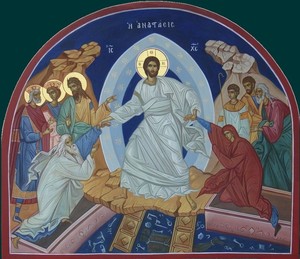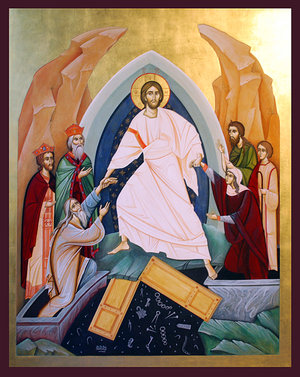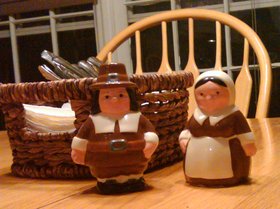Claire, Gabriele, and I were wondering what was going on in the one scene shown in several paintings and mosaics at the Greek Orthodox church. Something like the one below.

We wondered who was the old man on the left and the young man or woman on the right. And then there was an old man in chains at the bottom.
A little research revealed this is a traditional icon of the Resurrection or the “Harrowing of Hell” when Jesus descended into hell to free the trapped souls.
In the painting Jesus has crashed through the gates of hell and is freeing the two souls longest trapped, Adam and Eve. A demon or trapped soul will be shown under foot, often with many locks being unlocked (freeing of souls.) Sometimes angels and prophets accompany Jesus in these scenes. If there is a word at the top, it usually means “rising up.”
For some reason it is a tradition to show Adam old and Eve young. I went googling to find out why. This is one of those things hard to google. “why is adam old and eve young in greek painting”.
In searching I found a sermon by the Archbishop of Canterbury celebrating the unveiling of a painting just completed and being unveiled at St Andrew Holburn in London. It’s a pretty good sermon where he invites the audience to look closely at all of the meaning packed into the painting (typical of an icon.)
A key part of his sermon is how old Adam and Eve appear in the painting, representing their “4,000 winters.” So that answers the old question, but I wondered why the artist had deviated from the tradition of making Eve young. I zoomed in. I don’t think she is old in this painting (below). I think the artist stuck with the tradition, and the Archbishop missed an opportunity to answer my question about a young Eve. (At least he answered about an old Adam.) Maybe it is something about renewal / starting over.
I wonder if the Archbishop consulted the artist before writing the sermon? Anyway, I like the paintings of this scene, because it focuses not on the cross, but on what happened as a result.
www.archbishopofcanterbury.org/2561

………………………………………………………………………….






